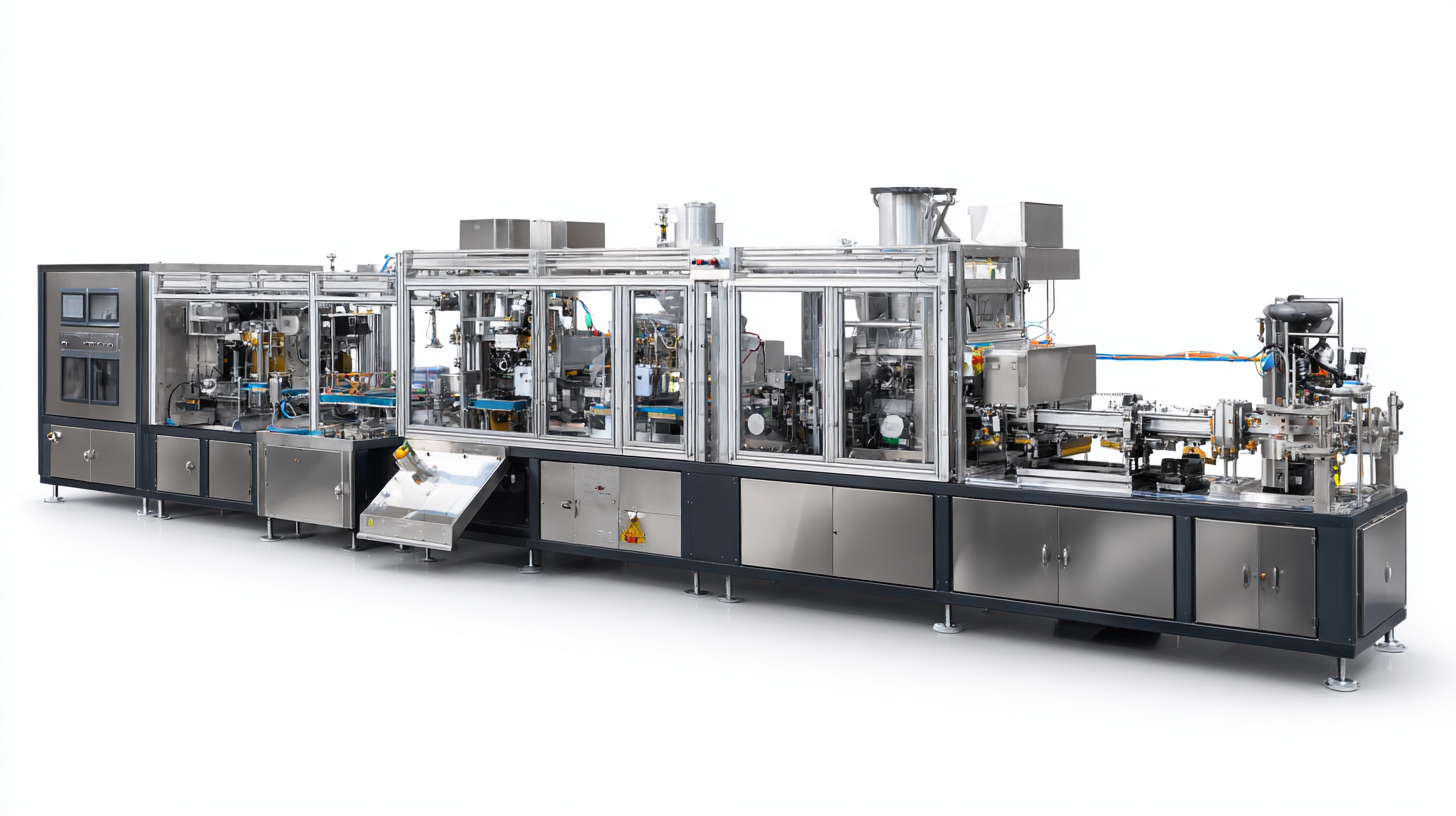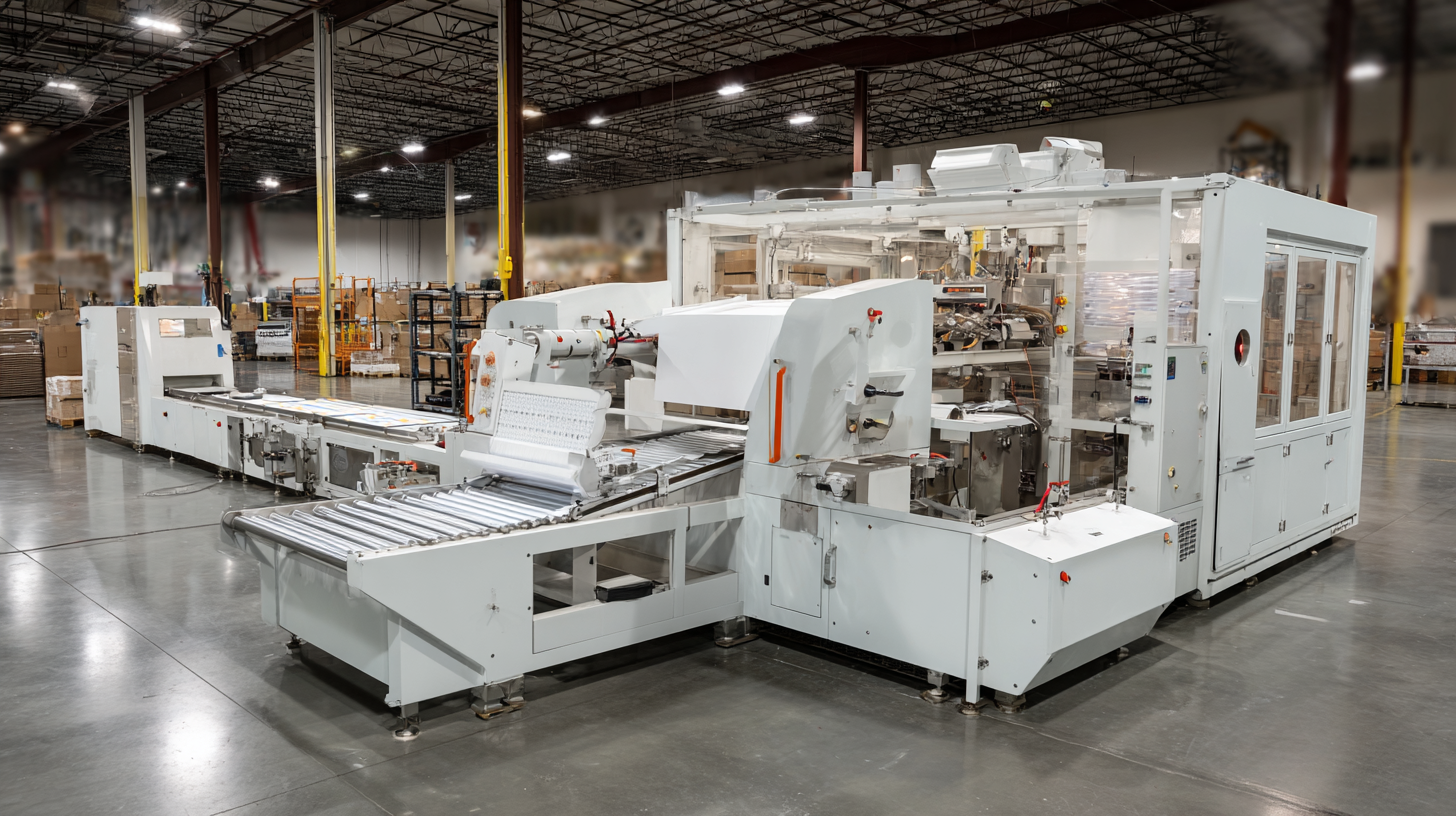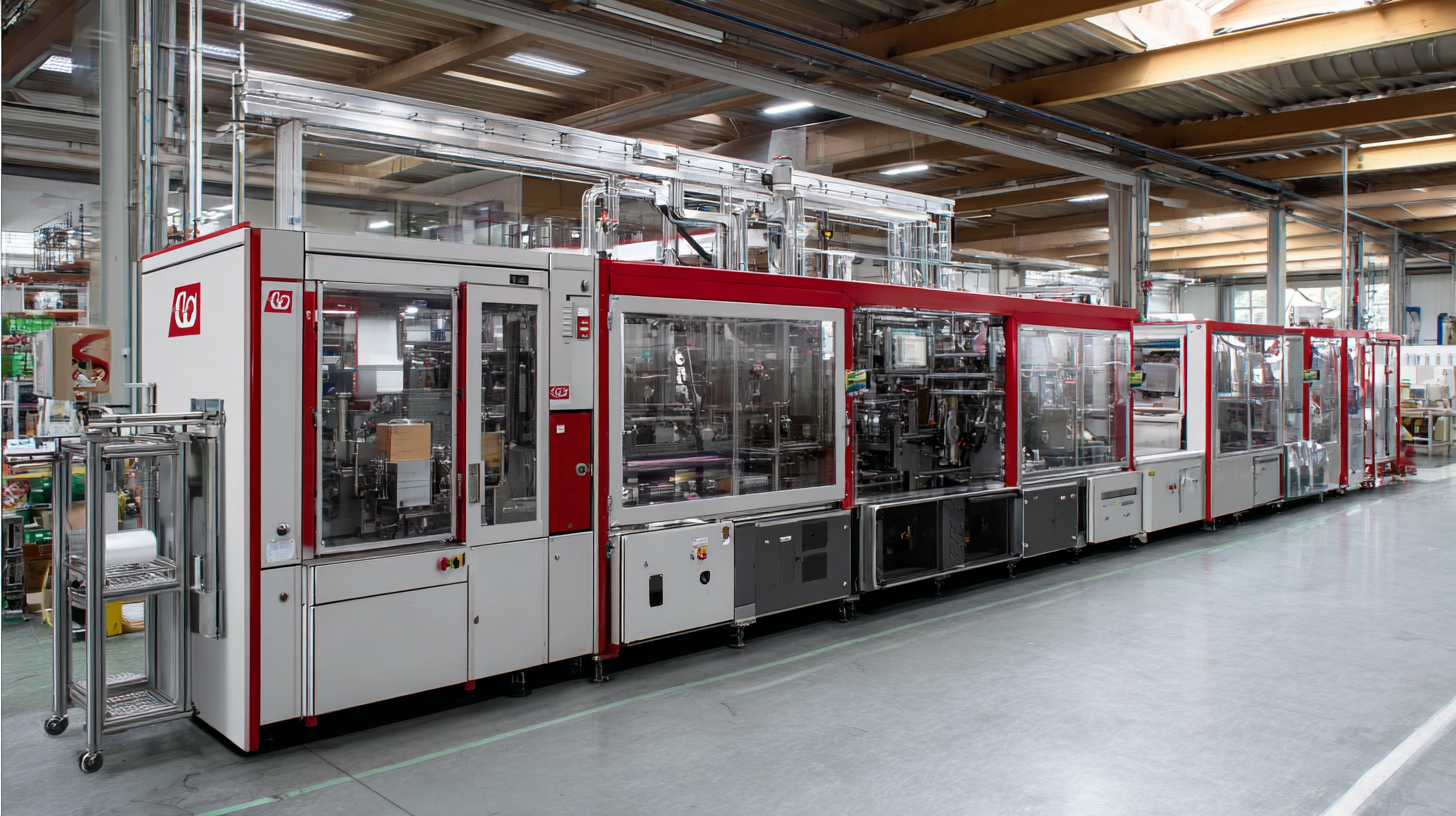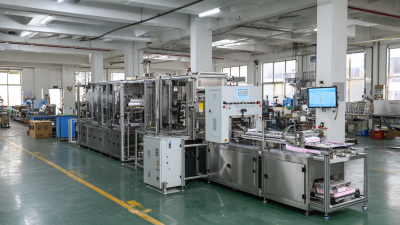5 Best Horizontal Form Fill Seal Machines for Your Packaging Needs
In the rapidly evolving packaging industry, the demand for efficient and reliable machinery is paramount. One of the standout solutions for manufacturers is the horizontal form fill seal machine, a technology that has gained significant traction due to its ability to streamline operations and enhance productivity. According to a recent report by Smithers Pira, the global packaging machinery market, which includes form fill seal technologies, is projected to reach $45 billion by 2024, with horizontal form fill seal machines playing a critical role in this growth. These machines provide versatility in packaging various products, from food to pharmaceuticals, and their automation capabilities significantly reduce labor costs and production time. As businesses continue to seek ways to optimize their packaging processes, understanding the benefits and features of the best horizontal form fill seal machines becomes essential for meeting diverse packaging needs effectively.

Understanding Horizontal Form Fill Seal Machinery: An Overview
Horizontal form fill seal (HFFS) machinery is at the forefront of modern packaging solutions, providing flexibility and efficiency for various products. Understanding the workings of HFFS machines is essential for any business looking to streamline its packaging processes. These machines create pouches or bags from flat plastic films, fill them with products, and then seal them, all in a continuous motion. This not only accelerates the packaging operation but also reduces labor costs and material waste.
When choosing an HFFS machine, consider the type of products you're packaging and their specific requirements. For instance, a recent innovation in 100% paper pouch systems highlights a growing trend towards sustainable packaging options. Implementing eco-friendly practices can not only meet consumer demand but also enhance your brand's image.
Tip: Always assess the machine's throughput capacity. A machine that can produce 140 pouches per minute might seem appealing, but ensure it aligns with your production needs to avoid bottlenecks. Additionally, explore the latest advancements in machinery that offer automatic changeovers for added convenience. This can significantly boost productivity and reduce downtime during transitions between different packaging formats.
5 Best Horizontal Form Fill Seal Machines for Your Packaging Needs
The following chart illustrates the performance metrics of five selected Horizontal Form Fill Seal machines, showcasing their average production speeds and efficiency ratings. This data can help in understanding which machines are most suitable for different packaging requirements.
Key Features to Look for in Horizontal Form Fill Seal Machines
 When it comes to selecting the perfect horizontal form fill seal (HFFS) machine for your packaging needs, understanding the key features is essential. One of the primary aspects to consider is the machine’s speed and efficiency. A high-speed HFFS machine can significantly enhance production rates, allowing for increased output while maintaining product quality. Additionally, look for machines with adjustable settings to accommodate various product sizes and packaging styles, ensuring versatility in your operations.
When it comes to selecting the perfect horizontal form fill seal (HFFS) machine for your packaging needs, understanding the key features is essential. One of the primary aspects to consider is the machine’s speed and efficiency. A high-speed HFFS machine can significantly enhance production rates, allowing for increased output while maintaining product quality. Additionally, look for machines with adjustable settings to accommodate various product sizes and packaging styles, ensuring versatility in your operations.
Another crucial feature is ease of use and maintenance. An intuitive control panel simplifies operation, reducing the learning curve for your staff. Furthermore, machines that offer quick-change capabilities for different packages can save time and reduce downtime during production shifts. Durability is also vital; investing in a robust machine can lead to long-term savings by minimizing maintenance costs and extending the life of your equipment. By focusing on these key features, you can make an informed choice that aligns with your packaging requirements and boosts your operational productivity.
Top 5 Horizontal Form Fill Seal Machines for Efficiency and Quality
When it comes to optimizing your packaging process, choosing the right horizontal form fill seal (HFFS) machine is crucial. These machines not only significantly enhance productivity but also ensure that your products are sealed with precision and quality. Among the various options available on the market, certain models stand out due to their efficiency and reliability. For manufacturers looking to elevate their packaging operations, investing in a top-tier HFFS machine can yield substantial benefits.
The best HFFS machines incorporate advanced technology that streamlines the packaging process while maintaining high standards of hygiene and safety. Features such as quick-change mechanisms, user-friendly interfaces, and energy-efficient designs set these machines apart from the competition. They are ideal for a wide range of applications, from food products to pharmaceuticals, ensuring that your items are protected and presented in the best possible manner.
By prioritizing efficiency and quality in your packaging line, these machines can help reduce waste and improve overall throughput, ultimately contributing to your business's bottom line.
Cost Comparison: Investing in Horizontal Form Fill Seal Technology
When considering the best horizontal form fill seal (HFFS) machines for your packaging needs, understanding the cost implications of investing in this technology is crucial. Horizontal form fill seal machines can significantly streamline the packaging process, improving efficiency and reducing labor costs. However, the initial investment varies widely based on machine capabilities, features, and manufacturer reputation. It's essential to balance the upfront cost with long-term savings and production efficiency.
Cost comparison among different HFFS machines reveals a range of options to fit various budgets. Lower-end machines may come with fewer features but can be adequate for simple packaging tasks. Mid-range models often strike a balance between cost and automation, offering increased speed and versatility, making them ideal for businesses looking to scale. On the higher end, premium machines boast advanced technology, higher speeds, and greater durability, justifying their cost for companies with larger production demands. Assessing these factors will ensure you make a well-informed investment that aligns with your packaging requirements and financial objectives.
Tips for Maintaining Your Horizontal Form Fill Seal Machine Properly
Maintaining your horizontal form fill seal machine is crucial for ensuring optimal performance and extending the lifespan of the equipment. One of the first tips is to establish a regular maintenance schedule that includes cleaning and lubrication. Dust and debris can accumulate in the machine, leading to potential malfunctions or product contamination. Cleaning the machine’s components, such as the filling area and sealing jaws, helps prevent buildup and ensures that the machine operates smoothly. Additionally, lubricating moving parts reduces friction, which can minimize wear and tear on the machinery.
Another key aspect of maintenance is regularly inspecting the machine for wear and tear. Check components like seals, belts, and rollers for any signs of damage or degradation. Early detection of issues can prevent costly repairs and downtime. Furthermore, always refer to the manufacturer's guidelines for specific maintenance recommendations and adjust your practices based on your production volume. By staying proactive with maintenance, you can improve the efficiency of your horizontal form fill seal machine and avoid unexpected interruptions in your packaging operations.

Related Posts
-

The Ultimate Guide to Comparing Packaging Automation Solutions for Global Buyers
-

Innovative Pouching Machine Designs Transforming Packaging Solutions
-

Unlocking Efficiency and Profitability with Powder Packaging Machines for Global Suppliers
-

How to Choose the Right Form Fill and Seal Machine for Your Packaging Needs
-

Exploring the Versatility of Pharmaceutical Filling Machines Across Industries
-

Essential Food Packing Machine Checklist: 10 Key Factors for Optimal Performance
